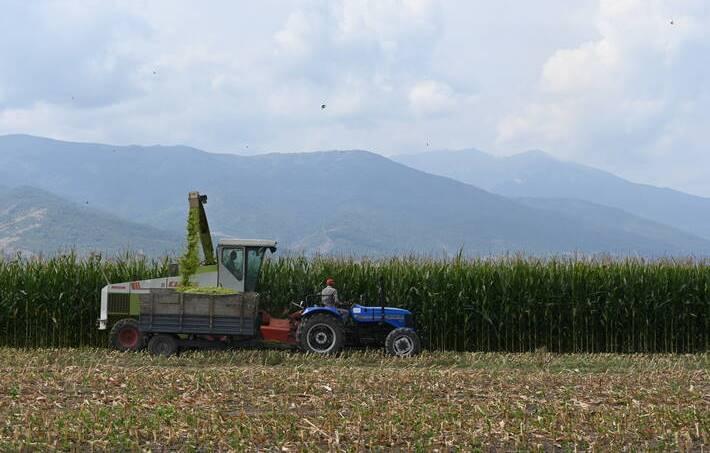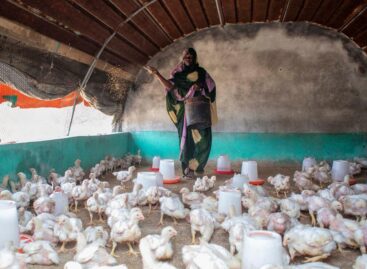FAO: Global food prices rise at rapid pace in May
Global food prices rose in May at their fastest monthly rate in more than a decade, even as world cereal production is on course to reach a new record high, the Food and Agriculture Organization of the United Nations (FAO) reported today.

The FAO Food Price Index averaged 127.1 points in May, 4.8 percent higher than in April and 39.7 percent higher than in May 2020.
A surge in the international prices of vegetable oils, sugar and cereals led the increase in the index, which tracks monthly changes in the international prices of commonly-traded food commodities, to its highest value since September 2011 and only 7.6 percent below its all-time peak in nominal terms.
The FAO Cereal Price Index increased 6.0 percent from April, led by international maize prices, which averaged 89.9 percent above their year-earlier value. However, maize prices started to retreat at the end of May, mostly on improved production prospects in the United States of America. International wheat prices also showed a late-month decline but averaged 6.8 percent higher in May than in April, while international rice quotations held steady.
The FAO Vegetable Oil Price Index gained 7.8 percent in May, mainly reflecting rising palm, soy and rapeseed oil quotations. Palm oil prices rose due to slow production growth in Southeast Asian countries, while prospects of robust global demand, especially from the biodiesel sector, drove soyoil prices higher.
The FAO Sugar Price Index increased by 6.8 percent from April, due largely to harvest delays and concerns over reduced crop yields in Brazil, the world’s largest sugar exporter, even as large export volumes from India contributed to easing the price surge.
The FAO Meat Price Index increased by 2.2 percent from April, with quotations for all meat types rising due to a faster pace of import purchases by China, as well as rising internal demand for poultry and pig meats in the leading producing regions.
The FAO Dairy Price Index rose by 1.8 percent in the month, averaging 28 percent above its level of one year ago. The increase was led by solid import demand for skim and whole milk powders, while butter prices declined for the first time in almost a year on increased export supplies from New Zealand.
Record cereal output expected in 2021
A new Cereal Supply and Demand Brief, also released today, offered FAO’s first forecast for world cereal production in 2021 – now pegged at nearly 2 821 million tonnes, a new record and a 1.9 percent increase from 2020, led by a foreseen 3.7 percent annual growth in maize output.
World cereal utilization in 2021/22 is predicted to expand by 1.7 percent to 2 826 million tonnes. Total cereal food consumption is forecast to rise in tandem with world population, while an increased use of wheat for animal feed is also anticipated.
Based on those forecasts, world cereal stocks at the close of crop seasons in 2021/22 are anticipated to increase by 0.3 percent to 811 million tonnes. While the expected modest rise would end three consecutive years of decline, the global stocks-to-use ratio is forecast to decline further to 28.1 percent.
FAO’s first forecast for world trade in cereals in the new season indicates an increase of only 0.3 percent from the high level estimated for 2020/21, when trade is expected to expand by as much as 6.3 percent to a peak level of 468 million tonnes.
Related news
AM: One of Hungary’s greatest strategic assets is good-quality fertile soil
🎧 Hallgasd a cikket: Lejátszás Szünet Folytatás Leállítás Nyelv: Auto…
Read more >FAO: International food prices have been declining since September
🎧 Hallgasd a cikket: Lejátszás Szünet Folytatás Leállítás Nyelv: Auto…
Read more >FAO-Ministry of Agriculture Scholarship Program Continues
🎧 Hallgasd a cikket: Lejátszás Szünet Folytatás Leállítás Nyelv: Auto…
Read more >Related news
How to avoid the hassles of online shopping?
🎧 Hallgasd a cikket: Lejátszás Szünet Folytatás Leállítás Nyelv: Auto…
Read more >It’s time for company Christmas parties: a waste of money or a good party?
🎧 Hallgasd a cikket: Lejátszás Szünet Folytatás Leállítás Nyelv: Auto…
Read more >Price isn’t enough, promotions and re(in)novation are lifting the plane
🎧 Hallgasd a cikket: Lejátszás Szünet Folytatás Leállítás Nyelv: Auto…
Read more >






